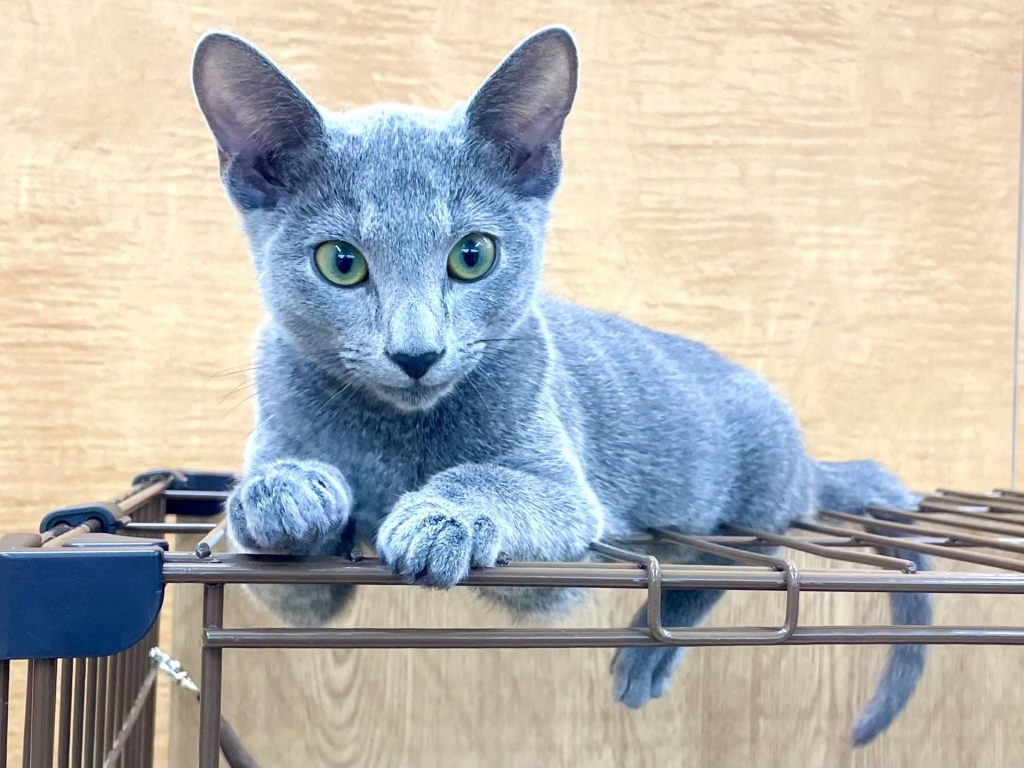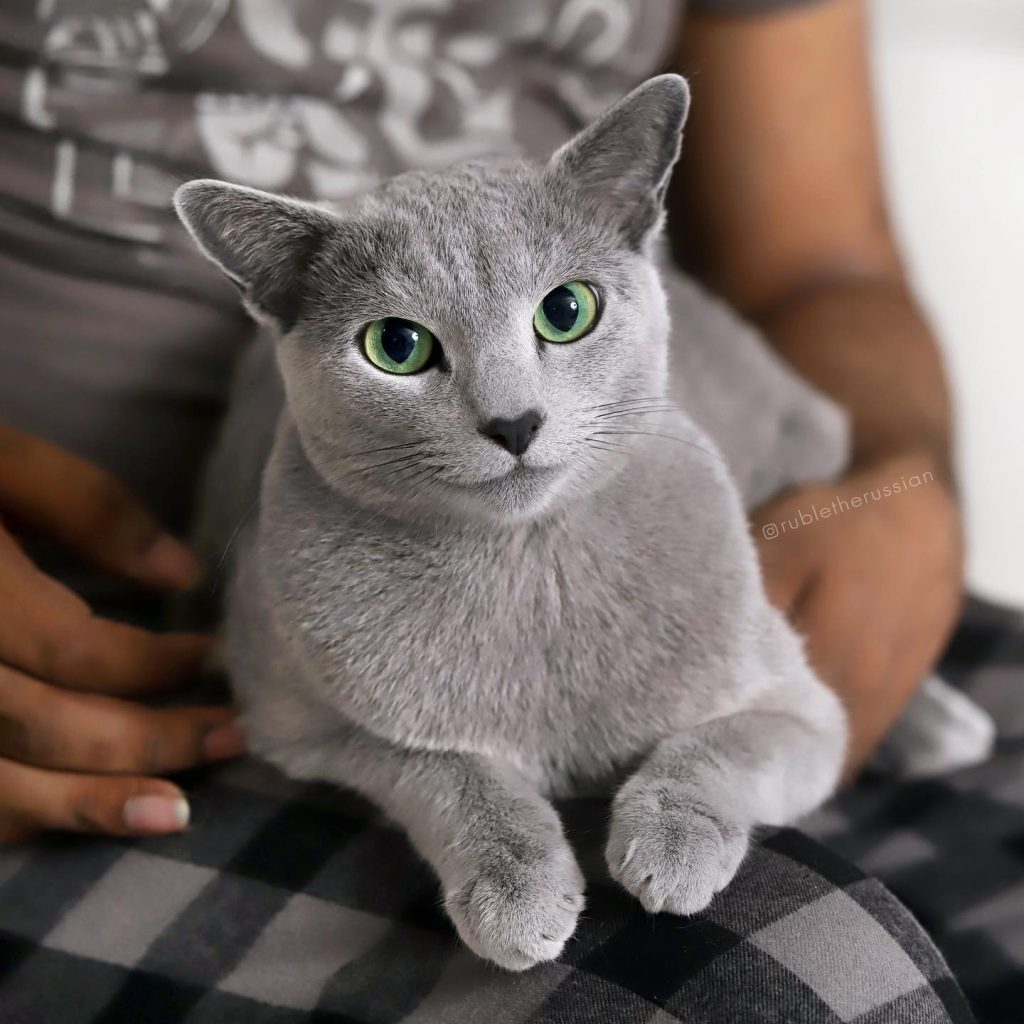Variety Overview
English Name: Russian Blue
Also Known As: Archangel Blue, Archangel Cat
Size: Medium
Country of Origin: Russia
Height: 45-62 cm
Lifespan: 10-16 years
The Russian Blue Cat, originating from Russia, was initially known as the Archangel Blue Cat until the 1940s when it adopted its current name. At one point in time, it was also referred to as the Maltese Cat.
This breed features a slender physique with large upright ears and small round paws that give the impression of walking on tiptoes. Its coat is short with a silver-blue sheen that complements its elegant build and graceful movements, giving it an aristocratic appearance among felines.
Russian Blue Cats are known for their calm demeanor, emotional depth, and gentle nature. They have soft and sweet voices; they are sensitive and delicate in their thoughts. These cats are independent yet curious, favoring quiet environments. They are quite reserved around strangers but show great trust towards their owners. They enjoy pleasing their owners and can live harmoniously with other household pets. Easy to care for, they are extremely popular as family pets.
Development Origin

The Russian Blue Cat is a naturally occurring breed that originated from Arkhangelsk Port in Russia (also known as the “Blue Angel” port). Hence, their fur color is often referred to as “Angel Blue.”
It’s believed that their ancestors, known as “Archangel Blue Cats,” were brought from Russian ports to England as early as the 17th century. In 1875, they were first registered at London’s Crystal Palace under the name Archangel Cat (or “Blue Angel Cat”). It wasn’t until 1912 that they were officially distinguished from other blue-furred breeds like British Shorthairs, French Chartreux, and Thai Korats.
Initially, it wasn’t until after World War II that breeding of Russian Blues expanded beyond England and Scandinavia. Due to wartime transportation disruptions narrowing their gene pool, some breeders began crossbreeding them with Siamese cats. Although this hybrid existed in America before WWII, it wasn’t until post-war efforts that they developed into what we now know in America as Modern Russian Blues.
Despite limited wartime breeding efforts leading to new breeds like Havana Browns (with fur resembling Havana cigars and Siamese ancestry) or introducing new lines like Nebelung cats (named from German for “creature of mist,” reflecting their stunning appearance), purebred Russian Blues have maintained their hallmark short gray-blue coats. In the early 1970s, Australian breeder Mavis Jones created an all-white version by crossing them with local white cats—aptly named “Russian White.” By the late ’70s, both Russian White and Black cats gained recognition among Australian enthusiasts. However, while international feline associations and America’s CFA recognize these variants as transitional forms of Russian Blues, CFA itself does not acknowledge them.
Ideal Audience
Stable Family Environment: Russian Blue cats are highly adaptable and can thrive in both solitary living conditions or within a family setting. They are home-friendly and integrate seamlessly into family life.
Social and Interactive Individuals: If you enjoy interacting with pets, the Russian Blue cat is ideal. They love socializing, playing games, and engaging with their owners.
Independent and Low-Maintenance Pet Seekers: These cats are not overly clingy and maintain a high level of independence, making them perfect for busy professionals or those with hectic schedules.
Families with Children and Elderly Members: Known for their gentle nature, Russian Blue cats are great companions for both children and elderly individuals, displaying patience and tenderness.
Long-Lived Pet Enthusiasts: With an average lifespan of 15 to 25 years, Russian Blue cats offer long-term companionship.
Mild Cat Allergy Sufferers: While they shed less than other breeds, it’s advisable for those with mild cat allergies to undergo allergen testing before deciding to adopt a Russian Blue cat.

Expand your knowledge
For cat owners who suffer from allergies, Russian Blue cats can be an ideal choice. Allergies to cats are generally caused by a specific protein known as Fel d 1, found in cat saliva, dander, and skin secretions. This protein triggers allergy symptoms like sneezing and itchy skin. Notably, Russian Blue cats produce lower amounts of Fel d 1 compared to other breeds, which helps reduce allergic reactions.
Moreover, Russian Blue cats are quite intelligent and respond well to rewards, often motivated by food. However, it’s important not to overfeed them during training sessions. Their affinity for rewards makes them easier to train than many other breeds; for instance, teaching them how to use a litter box becomes simpler with timely praise for correct actions.
It’s also noteworthy that Russian Blue cats are a natural breed with no human intervention or genetic modifications. Natural breeds tend to be healthier, have longer lifespans, and are less susceptible to certain genetic disorders compared to artificially bred counterparts.
